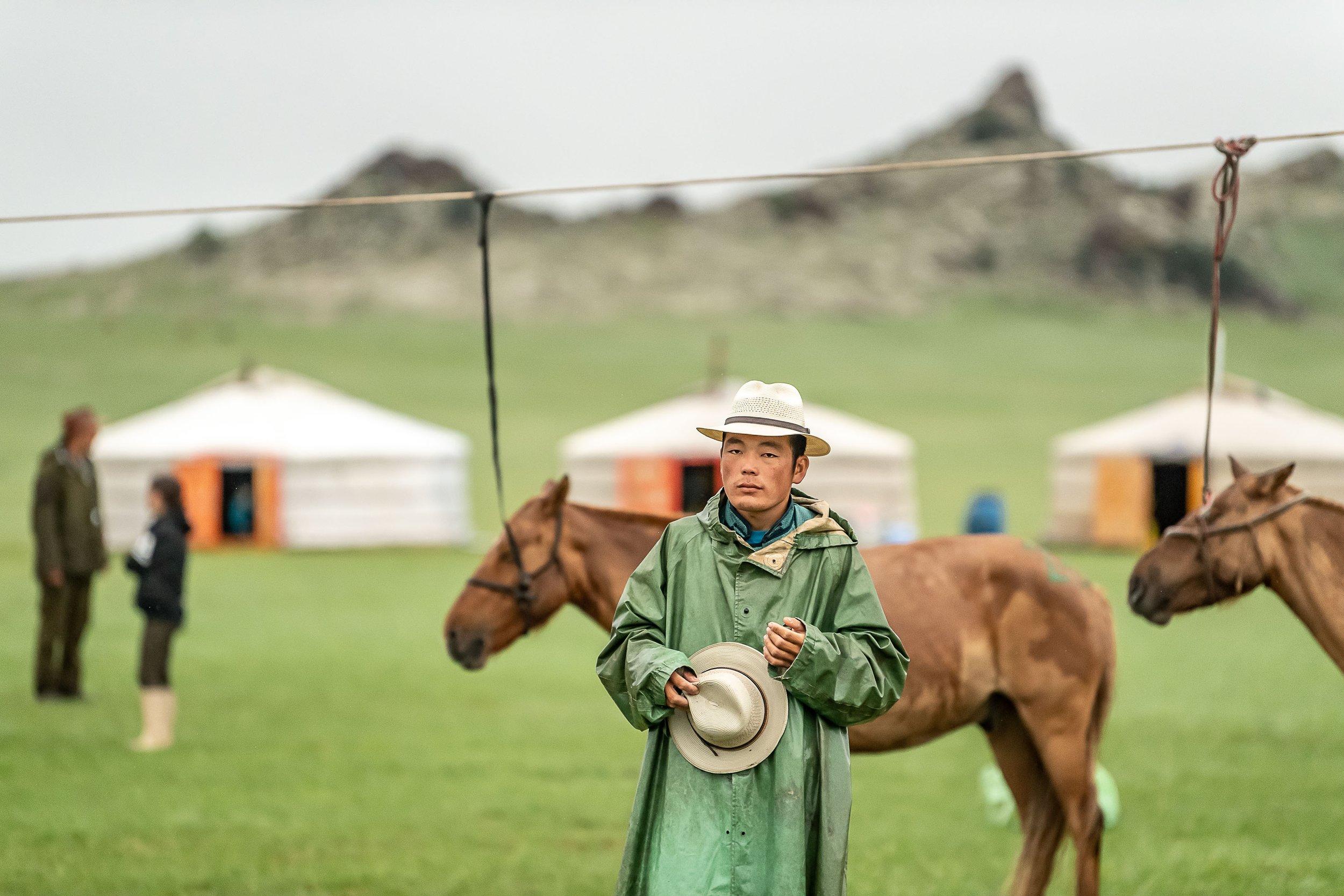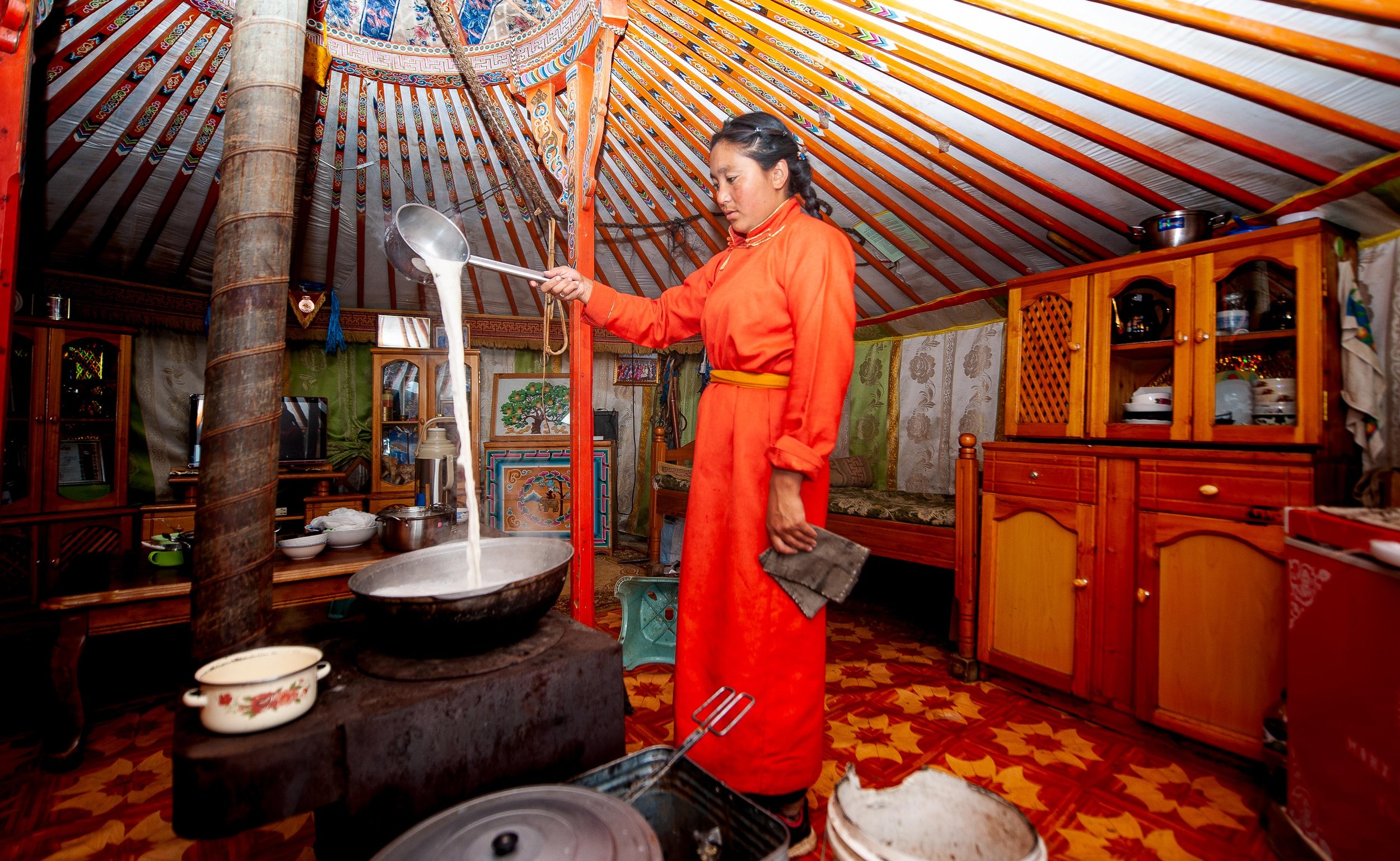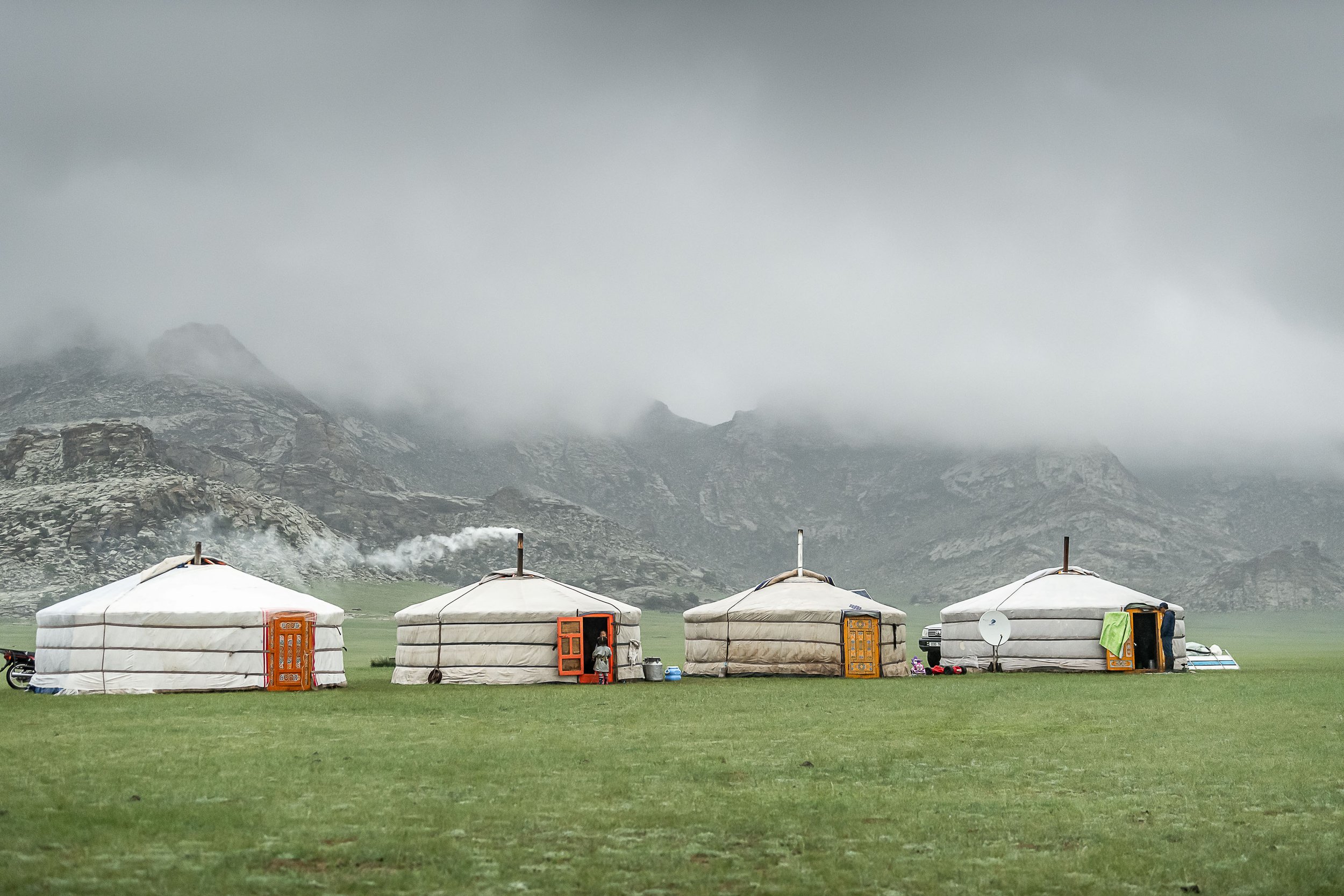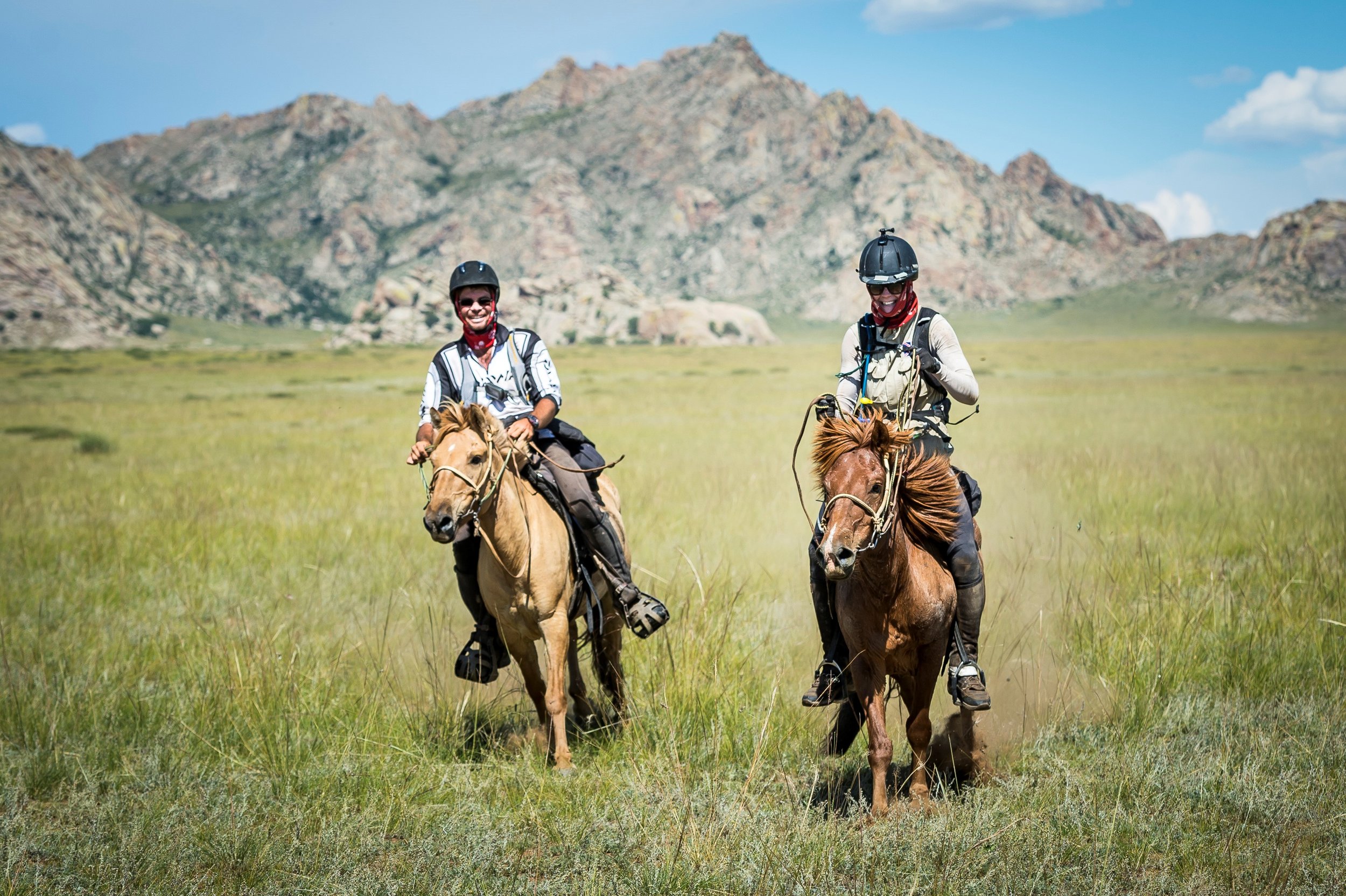Magnificent Mongolia
“For me this photo is exactly how the whole experience felt. Happiness is a fast horse and the open road.”
Ulaanbaatar, or ‘UB’ as Westerners call it, is the capital of Mongolia. It has the usual modern tower blocks and expensive coffee shops. The steppe is there, but you have to look for it; out to the sacred hills around the city, the occasional herder in a late night café, or the black market and stalls selling pot belly stoves and Russian cavalry boots.
words: Róisín Magee images: Richard Dunwoody, The Equestrianists
But peering past the grey nylon curtains of an old Soviet-era bus as we quivered and shook our way north east from Ulaanbaatar, the tarmac road ran out and the steppe began. The city was nowhere to be seen. The other passengers chatted about their plans for the race and for the first time, I started to wonder whether I had bitten off more than I could chew…
The Mongol Derby, a 1,000 kilometre horse race, recreates the messenger system established by Ghengis Khan in 1224. Riders from all over the world ride a series of semi-wild horses between horse stations dotted along the course, navigating their own route and staying with nomadic herders along the way. Each horse only does 30-40 kilometres, but the riders cover the whole 1,000 kilometres, sometimes riding more than 100 kilometres a day. I’m sure it helps if you’re a great rider, but honestly – and I can say this with total confidence – you don’t need to be a good rider to finish the race. This is just as well, as after the gun fired and the forty-odd riders blasted off the start line, it was immediately obvious that at least one of the pack had absolutely no idea what she was doing. That was me.
I couldn’t read a GPS to save my life. I rarely knew where the racing line was. I couldn’t do any more than steer my horse and, as I never knew which direction I was supposed to be heading in, that didn’t help me much. I rode most of the first half of the race on my own, but none of this seemed to matter. Mongolia, land of the blue sky, was very beautiful and the weather was great. I galloped down mountainsides (that I wasn’t supposed to be anywhere near). I galloped across bright green pastures (that turned out to be surprisingly deep bogs). Sometimes the horizon stretched as far as the eye could see, across endless grassy steppe; sometimes I rode through river valleys edged in by hills that turned blue at dusk. There were no fences, no tarmac roads and everywhere I went I felt welcome.
As I passed gers (round Mongolian felt tents the nomadic herders live in year-round) laughing children would appear to wave and cheer, or even race alongside me on their horses for a few kilometres, barefoot and bareheaded. Sometimes one or two herders in ankle-length dels (a traditional Mongolian overcoat) would appear on a motorbike, shouting encouragements, waving their long sleeves around and my horse would pick up its pace. Mongolian hospitality is legendary; everywhere I stopped I was greeted with hot tea, a bowl of noodle soup and sometimes biscuits or even bowls of curd, which tasted like a cross between lemon curd and white chocolate.
About half way through the race the horse I was riding started to feel ‘off’ so I stopped next to a river thinking the water might cool him down. When I lifted my saddle off, however, I saw a large rub on his back. My heart sank. I had 25 kilometres of the stage to cover before I could get a fresh horse and this one was unrideable. I picked up the saddle and, leading my horse, set off on foot. A passing race vehicle took pity on me and carried my saddle forwards but I had a long, hot jog in front of me. When I reached the next station, I was the very last rider in the entire race and it felt as if I might not finish the race at all.
I pushed on as hard as I could and by the time I caught up with an Australian stockman, I was more than happy to ride on together. James and I rode through herds of wild horses and camels, past salt flats shimmering in the heat and over mountain passes. We saw flocks of vultures hunched on grassy slopes and even the occasional golden eagle, soaring overhead. The pressure was off and all we had to do was enjoy the freedom of a good horse and the open road.
On our last night, we saw a family moving herds back to their gers and stopped to ask if we could stay. They made us khuushur (fried meat pastries), we watched Japanese horse racing on their satellite TV and tried to chat using our Mongolian phrase book as the sun dropped below the river next to us. It was the best of times.
——————————————————————
The government of Mongolia has recently declared 2023 and 2023 ‘Years to visit Mongolia’ and from 11 January 2023, New Zealand citizens will be able to travel to Mongolia for tourism for stays of 30 days without obtaining a visa (and will be able to do so until at least the end of 2025). If you are looking for friendly hosts, beautiful landscapes and maybe even a spot of horse riding this is an opportunity not to be missed.





